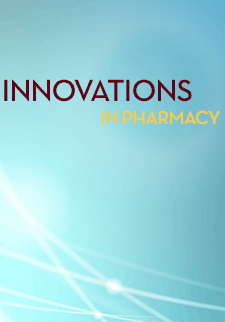Structured Multi-Stakeholder Workshops to Advance a Global Transformative Roadmap for Pharmaceutical Workforce
Andreia Bruno
Faculty of Pharmacy and Pharmaceutical Sciences, Monash University
Claire Anderson
School of Pharmacy, University of Nottingham, Nottingham
Lina Bader
International Pharmaceutical Federation, The Hague
Ian Bates
FIP Collaborating Centre, UCL School of Pharmacy, London
Jill Boone
University of Cincinnati James L. Winkle College of Pharmacy, Ohio
Tina Brock
Faculty of Pharmacy and Pharmaceutical Sciences, Monash University, Melbourne
Joana Carrasqueira
Silicon Valley Innovation Center, San Francisco
Kirsten Galbraith
Faculty of Pharmacy and Pharmaceutical Sciences, Monash University, Melbourne
Susan James
Ontario College of Pharmacists, Toronto
Ian Larson
Faculty of Pharmacy and Pharmaceutical Sciences, Monash University, Melbourne
Ema Paulino
International Pharmaceutical Federation, The Hague
Michael Rouse
Accreditation Council for Pharmacy Education, Chicago
Toyin Tofade
Howard University College of Pharmacy, Washington DC
Whitley Yi
University of Colorado Skaggs School of Pharmacy and Pharmaceutical Sciences, Aurora, Colorado
DOI: https://doi.org/10.24926/iip.v9i3.1272
Keywords: Pharmacy education, Pharmaceutical education, transformative education, roadmap, pharmaceutical workforce development goals, PWDG
Abstract
In November 2016, the International Pharmaceutical Federation (FIP) endeavored to create an environment to foster a shared vision to lead a transformative pharmaceutical workforce roadmap. Three milestone documents were developed and presented at the Global Conference on Pharmacy and Pharmaceutical Education. Workshops with the key themes and connecting Pharmaceutical Workforce Development Goals (PWDG) were conducted and analyzed. This Note serves to summarize the key aspects of these workshops, reporting on the innovative approaches used to generate guidance for stakeholders regarding implementation.
Innovation: Seven workshops with a uniform structure were developed. These were designed to improve communication, harmonise outcome-generation, and allow for aggregate analysis. A team of seven conducted each workshop, each team consisted of: a Chair, a facilitator, one rapporteur, and four speakers purposively selected from FIP member organisations and other key stakeholders with expertise for sharing a variety of perspectives. Guidelines and templates were developed for all roles and each team was briefed in advance.
Key findings: Approximately 200 personnel participated in the seven workshops, with around 20 country representatives per workshop, covering all six World Health Organisation regions. Three key aspects of workforce transformation, using the PWDGs, were explored in each workshop: drivers for implementation; challenges to implementation; and ways of encouraging implementation. Drivers for implementation mentioned were enhancing collaboration and engagement. Challenges to implementation were identified as variance in terminology. Several ways of encouraging implementation were acknowledged, such as communication strategies, advocating for workforce development and sharing best practices to foster partnerships.
Next steps: The unique format of the workshops, the innovative approach to include stakeholders across an array of settings and the parallel structure in all the seven workshops, aided in creating reliable findings. The achievability of the PWDGs depends on several factors. Engagement with stakeholders and engagement from and between professional associations are important factors to achieving workforce development goals.
Article Type: Note



